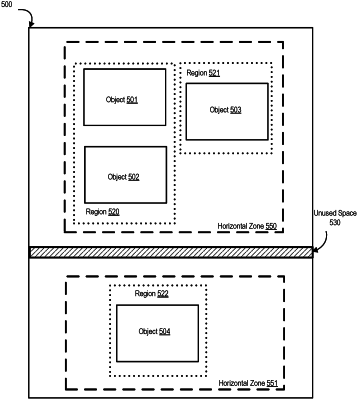| CPC G06F 40/106 (2020.01) [G06F 16/9577 (2019.01); G06F 40/103 (2020.01); G06F 40/166 (2020.01)] | 18 Claims |

|
1. A method comprising:
accessing a content stream of an electronic document, the content stream comprising a set of objects that are present in the electronic document, wherein each object of the set of objects is associated with a corresponding location within the electronic document, and wherein the content stream includes metadata that identifies a first reading order of the set of objects within the electronic document;
determining an area of unused space comprising a portion of the electronic document horizontally extending across an entirety of the electronic document, wherein the set of objects are not present in the portion of the electronic document;
identifying a first horizontal zone comprising a first object and a second object of the set of objects, wherein the first object and the second object are located above the area of unused space, and wherein the first object is located to the left or above the second object within the first horizontal zone;
identifying a second horizontal zone comprising a third object of the set of objects, wherein the third object is located below the area of unused space;
creating, according to the first horizontal zone and the second horizontal zone, a second reading order of the electronic document by ordering the first object followed by the second object followed by the third object, wherein the second reading order is different from the first reading order identified by the content stream;
generating an updated metadata that identifies the second reading order of the electronic document; and
outputting a document layout for the electronic document that positions the first object, the second object, and the third object according to the updated metadata.
|